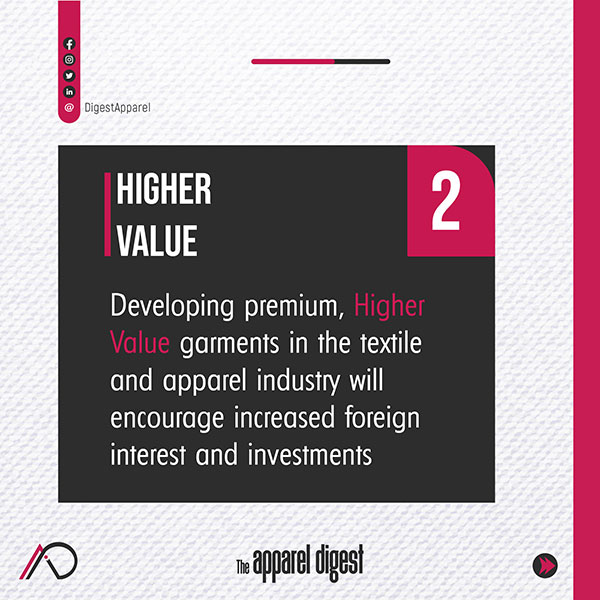Dewan Mashuq Uz Zaman
The modern fashion marketplace has undergone a fundamental transformation. No longer do customers wander through shopping malls or depend on sales employee for advice. The dominant forces today are search engines, product reviews, price comparison tools, and algorithm-driven discovery. In such a digital landscape, the challenge is no longer simply to exist online, but rather to be seen. Visibility has become everything.
The traditional methods of advertising, such billboards, TV commercials, and store displays, are not as effective in reaching consumers nowadays. Search engine optimization, a more technical strategy, has supplanted these tactics. To succeed in today’s market, a clothing retailer operating online needs to provide more than just attractive products. It must understand how search engines work and make sure the store can be found when people are looking. This kind of marketing is not based on catchy ideas or clever words. It is based on careful planning, using data, and following a clear strategy.
At the core of SEO lies the concept of keyword targeting. Keyword research reveals the terms and phrases customers use when searching for products. Instead of simply offering products for sale, retailers must understand how consumers express their needs. A term such as “ready-made kurti for office wear” is more informative than a generic phrase like “women’s clothing.” Specific search phrases reflect clear intent, allowing stores to align their offerings with user demand. Tools such as Google Keyword Planner assist in identifying these terms, measuring competition, and estimating traffic potential.
After identifying the correct keywords, the next step involves integrating them into the website. This is referred to as on-page optimization. Product titles, descriptions, URLs, and headings should all be aligned with target keywords. Search engines evaluate these components to determine what the page is about. In addition, meta descriptions, brief summaries that appear below search result links, play a role in persuading users to click. While not a ranking factor, a well-crafted meta description increases click-through rates and improves the site’s engagement metrics.
There is more to optimization than keywords and text. The structure of the website itself plays an important role. Speed matters. A slow-loading site pushes the customer away. Navigation matters. Confusing menus or illogical category structures increase bounce rates. The bounce rate is the number of visitors who leave a site after viewing one page, which generally means the experience or content wasn’t something they were searching for. Internal links, such as linking similar products or linking blog posts to product categories, helps both users and search engines navigate the site more effectively. Product images without descriptive alternative text are not only inaccessible to some users but also invisible to search engines. Thus, even fashion photographs must be read by the machine.
Off-page SEO refers to factors outside the website that influence its authority and visibility One of the most important parts is getting backlinks, which are links from other websites that tell search engines the site is reliable. For clothing stores, this might mean working with fashion bloggers, influencers, or getting the brand mentioned in online magazines. These signals are interpreted by search engines as evidence of trustworthiness. In addition to backlinks, social media activity contributes indirectly to SEO. When products are shared widely, traffic increases, and more users engage with the site. This additional exposure often leads to further links, brand mentions, and higher domain authority.
Local SEO needs to be considered by fashion businesses that operate within specific geographic areas. Retailers who register with Google My Business and maintain consistent name address and phone number information across all listings will increase their visibility in location-based searches. Local indicators help customers find the “panjabi shop in Banani” and “saree boutique near me” they seek. Brands that actively manage their presence in local directories and generate localized content are more likely to convert regional interest into sales.
Mobile optimization is no longer optional. With most users accessing fashion websites on smartphones, sites must be responsive across all screen sizes. Beyond layout, speed is critical because mobile users are quick to abandon slow-loading pages. Additionally, voice search is on the rise. Queries like “Where can I buy a cotton saree in Sylhet?” demand natural language processing and well-structured content to ensure the brand appear in spoken search results.
There are also traps. Among the most common is keyword stuffing, where a phrase is used so excessively that the content becomes unreadable. Another is the duplication of content, copying product descriptions from other sites or reusing old materials. This reduces uniqueness and damages credibility. Failure to optimize images, particularly in an industry so reliant on aesthetics, is another frequent misstep. Similarly broken links, and inconsistent branding across platforms can erode the site’s credibility.
In conclusion, SEO is not a one-time task but a continuous and evolving practice. For online fashion retailers, visibility in search results determines whether their products reach the customer or remain hidden. A thoughtful SEO strategy improves digital presence and drives business growth. Those who understand and invest in these methods will compete more effectively in the crowded online fashion landscape.

